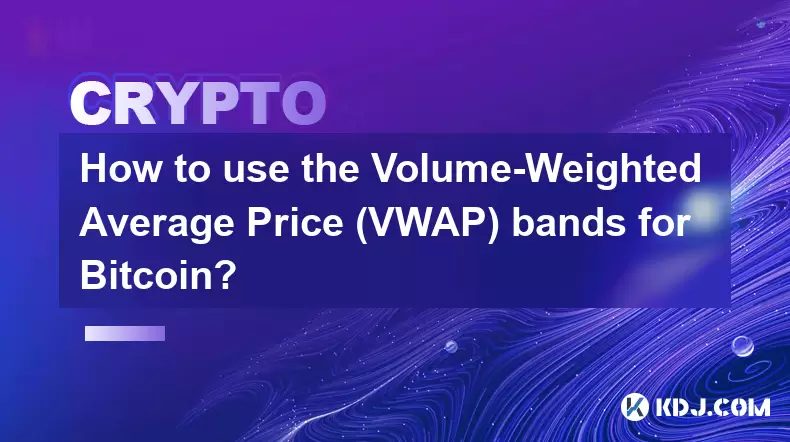-
 Bitcoin
Bitcoin $108,262.4325
-1.40% -
 Ethereum
Ethereum $2,518.2882
-2.94% -
 Tether USDt
Tether USDt $1.0003
-0.01% -
 XRP
XRP $2.2262
-1.71% -
 BNB
BNB $653.9254
-1.55% -
 Solana
Solana $148.1036
-3.11% -
 USDC
USDC $1.0000
0.01% -
 TRON
TRON $0.2829
-1.45% -
 Dogecoin
Dogecoin $0.1639
-4.82% -
 Cardano
Cardano $0.5742
-4.43% -
 Hyperliquid
Hyperliquid $38.9506
-3.95% -
 Sui
Sui $2.9040
-4.34% -
 Bitcoin Cash
Bitcoin Cash $484.8307
-2.62% -
 Chainlink
Chainlink $13.1971
-3.73% -
 UNUS SED LEO
UNUS SED LEO $9.0822
0.51% -
 Avalanche
Avalanche $17.8613
-4.01% -
 Stellar
Stellar $0.2385
-2.26% -
 Toncoin
Toncoin $2.7570
-3.88% -
 Shiba Inu
Shiba Inu $0.0...01145
-3.99% -
 Litecoin
Litecoin $86.9999
-2.43% -
 Hedera
Hedera $0.1538
-3.90% -
 Monero
Monero $313.7554
-2.03% -
 Polkadot
Polkadot $3.3681
-5.08% -
 Dai
Dai $1.0000
0.00% -
 Ethena USDe
Ethena USDe $1.0001
-0.01% -
 Bitget Token
Bitget Token $4.4401
-2.97% -
 Uniswap
Uniswap $6.9644
-8.41% -
 Pepe
Pepe $0.0...09666
-4.79% -
 Aave
Aave $266.5686
-5.04% -
 Pi
Pi $0.4713
-4.95%
How to choose a Bitcoin trading platform? How to judge security?
Choose a Bitcoin trading platform by assessing your needs, checking security features like 2FA and cold storage, and comparing fees and user reviews for reliability.
Apr 30, 2025 at 08:28 am

Choosing a Bitcoin trading platform is a crucial decision for any cryptocurrency trader. With the rise in popularity of Bitcoin and other cryptocurrencies, the number of trading platforms has also increased, making it essential to select one that is secure, reliable, and suited to your trading needs. In this article, we will explore how to choose a Bitcoin trading platform and how to judge its security.
Understanding Your Trading Needs
Before diving into the specifics of a trading platform, it's important to assess your trading needs. Different platforms cater to different types of traders, ranging from beginners to advanced users. Some platforms offer a user-friendly interface with limited features, while others provide advanced trading tools and high liquidity.
- Consider your level of experience with cryptocurrency trading. Are you a beginner looking for a simple interface, or an experienced trader needing advanced charting tools?
- Determine your trading volume. Some platforms have minimum or maximum trade limits that may not suit your needs.
- Think about the types of cryptocurrencies you want to trade. Not all platforms support every cryptocurrency.
- Evaluate your need for customer support. Some platforms offer 24/7 support, which can be crucial for resolving issues quickly.
Key Features to Look for in a Bitcoin Trading Platform
When evaluating a Bitcoin trading platform, several key features should be considered to ensure it meets your trading requirements.
- Security Measures: The platform should have robust security protocols in place, including two-factor authentication (2FA), cold storage for funds, and encryption of user data.
- Fees and Costs: Understand the fee structure, including trading fees, withdrawal fees, and any other charges that may apply. Compare these fees across different platforms to find the most cost-effective option.
- Liquidity: High liquidity is essential for executing trades quickly and at favorable prices. Platforms with higher trading volumes typically offer better liquidity.
- User Interface and Experience: The platform should be easy to navigate and use. A good user interface can significantly enhance your trading experience.
- Regulation and Compliance: Check if the platform is regulated by a financial authority. Regulated platforms are generally more trustworthy and offer better protection for users.
How to Judge the Security of a Bitcoin Trading Platform
Security is paramount when choosing a Bitcoin trading platform. Here are several factors to consider when assessing the security of a platform:
- Two-Factor Authentication (2FA): Ensure the platform supports 2FA, which adds an extra layer of security to your account by requiring a second form of verification.
- Cold Storage: Funds should be stored in offline cold storage wallets to protect them from online hacks. Check if the platform uses cold storage for the majority of its funds.
- Encryption: The platform should use encryption to protect user data and communications. Look for platforms that use SSL/TLS encryption.
- Insurance: Some platforms offer insurance on user funds. This can provide an additional layer of protection against theft or loss.
- Security Audits: Regular security audits by independent third parties can help ensure the platform's security measures are up to date and effective.
- User Reviews and Reputation: Research user reviews and the platform's reputation within the cryptocurrency community. A platform with a strong track record of security is generally more trustworthy.
Evaluating the Platform's Reputation and User Reviews
The reputation of a Bitcoin trading platform can provide valuable insights into its reliability and security. User reviews and community feedback are essential resources for gauging a platform's performance.
- Check online forums and social media platforms for user experiences and reviews. Websites like Reddit and BitcoinTalk can be useful for finding honest feedback.
- Look for any reported security breaches or issues in the past. A platform that has experienced hacks or significant downtime may not be as secure as one with a clean record.
- Consider the platform's response to user complaints and issues. A platform that actively addresses user concerns and resolves problems quickly is more likely to be trustworthy.
Comparing Fees and Costs
Fees and costs can significantly impact your trading profitability. Understanding and comparing the fee structures of different platforms is crucial for making an informed decision.
- Trading fees are typically charged as a percentage of the trade value. Compare these fees across different platforms to find the most competitive rates.
- Withdrawal fees can vary widely. Some platforms charge a flat fee, while others charge a percentage of the withdrawal amount.
- Look for any hidden fees, such as deposit fees or inactivity fees, that may not be immediately apparent.
- Some platforms offer fee discounts for using their native tokens or for high-volume trading. Consider whether these discounts could benefit your trading strategy.
Testing the Platform with a Demo Account
Before committing to a Bitcoin trading platform, it's a good idea to test it with a demo account. Many platforms offer demo accounts that allow you to practice trading without risking real money.
- Use the demo account to familiarize yourself with the platform's interface and features.
- Test the platform's speed and responsiveness. A platform that is slow or frequently crashes can be frustrating to use.
- Evaluate the platform's customer support by reaching out with questions or issues. Prompt and helpful responses can be a good indicator of the platform's reliability.
Frequently Asked Questions
Q: Can I trade Bitcoin on multiple platforms simultaneously?
A: Yes, you can trade Bitcoin on multiple platforms simultaneously. However, it's important to manage your funds carefully and keep track of your trades across different platforms to avoid confusion and potential losses.
Q: How often should I withdraw my funds from a trading platform?
A: The frequency of withdrawals depends on your trading strategy and risk tolerance. Some traders prefer to withdraw their funds regularly to minimize the risk of leaving large amounts on the platform, while others may leave their funds on the platform for longer periods to take advantage of trading opportunities.
Q: Are there any platforms that specialize in Bitcoin trading?
A: Yes, there are platforms that specialize in Bitcoin trading, such as Coinbase and Kraken. These platforms often offer advanced features and high liquidity specifically for Bitcoin trading, making them suitable for traders focused on Bitcoin.
Q: How can I protect my account from unauthorized access?
A: To protect your account from unauthorized access, use strong, unique passwords, enable two-factor authentication (2FA), and be cautious of phishing attempts. Regularly monitor your account activity and report any suspicious behavior to the platform's support team immediately.
Disclaimer:info@kdj.com
The information provided is not trading advice. kdj.com does not assume any responsibility for any investments made based on the information provided in this article. Cryptocurrencies are highly volatile and it is highly recommended that you invest with caution after thorough research!
If you believe that the content used on this website infringes your copyright, please contact us immediately (info@kdj.com) and we will delete it promptly.
- Bitcoin's Pattern Break: Are HODLers the Key to the Next Surge?
- 2025-07-04 18:50:12
- Bitcoin Price, Trump's Bill, and the $150K Dream: A NYC Take
- 2025-07-04 19:50:12
- Ethereum, LILPEPE, and the July Bounce: Will Pepe Steal ETH's Thunder?
- 2025-07-04 19:10:12
- Binance Institutional Loans: Unlocking 4x Leverage and Zero Interest for Whales
- 2025-07-04 19:15:12
- Bitcoin Bull Run: Analysts Eye Peak in Late 2025?
- 2025-07-04 19:20:13
- Pepe Indicators, Bullish Forecast: Can the Meme Coin Rally?
- 2025-07-04 19:25:12
Related knowledge

What is the Woodies CCI indicator and can it be used for Bitcoin?
Jul 04,2025 at 05:14pm
Understanding the Woodies CCI IndicatorThe Woodies CCI indicator is a variation of the traditional Commodity Channel Index (CCI), which was originally developed by Donald Lambert. The standard CCI measures the current price level relative to an average price over a given period, typically 14. However, the Woodies version modifies this calculation to mak...

How to use the Volume-Weighted Average Price (VWAP) bands for Bitcoin?
Jul 04,2025 at 04:28pm
Understanding the Basics of VWAP BandsThe Volume-Weighted Average Price (VWAP) is a key metric used in trading to determine the average price at which an asset, such as Bitcoin, has traded throughout the day. It takes into account both volume and price, making it more reliable than a simple moving average. VWAP bands are essentially standard deviation c...

What is the VWAP indicator and how to use it for Bitcoin?
Jul 04,2025 at 05:28pm
Understanding the VWAP IndicatorThe VWAP (Volume Weighted Average Price) is a technical analysis tool used to determine the average price a cryptocurrency has traded at throughout the day, based on both volume and price. It provides traders with insights into the true average value of an asset by giving more weight to periods where trading volume was hi...

How to read Bitcoin candlestick charts for beginners?
Jul 04,2025 at 11:22am
Understanding the Basics of Candlestick ChartsCandlestick charts are a popular tool used in cryptocurrency trading to analyze price movements. Each candlestick represents a specific time period, such as one minute, five minutes, or even one day. For beginners, understanding how to interpret these charts is crucial for making informed trading decisions. ...

What is the role of Satoshi Nakamoto in Bitcoin?
Jul 04,2025 at 03:14am
Who is Satoshi Nakamoto?Satoshi Nakamoto is the pseudonymous individual or group responsible for creating Bitcoin, the world's first decentralized digital currency. Despite extensive research and speculation, the true identity of Satoshi Nakamoto remains unknown. The name was used in communications related to the development and release of the Bitcoin w...

What is the Bitcoin whitepaper?
Jul 04,2025 at 01:42am
What is the Bitcoin Whitepaper?The Bitcoin whitepaper is a foundational document published in 2008 by an individual or group using the pseudonym Satoshi Nakamoto. Titled 'Bitcoin: A Peer-to-Peer Electronic Cash System', it outlines the theoretical framework and technical specifications for creating a decentralized digital currency. This paper introduced...

What is the Woodies CCI indicator and can it be used for Bitcoin?
Jul 04,2025 at 05:14pm
Understanding the Woodies CCI IndicatorThe Woodies CCI indicator is a variation of the traditional Commodity Channel Index (CCI), which was originally developed by Donald Lambert. The standard CCI measures the current price level relative to an average price over a given period, typically 14. However, the Woodies version modifies this calculation to mak...

How to use the Volume-Weighted Average Price (VWAP) bands for Bitcoin?
Jul 04,2025 at 04:28pm
Understanding the Basics of VWAP BandsThe Volume-Weighted Average Price (VWAP) is a key metric used in trading to determine the average price at which an asset, such as Bitcoin, has traded throughout the day. It takes into account both volume and price, making it more reliable than a simple moving average. VWAP bands are essentially standard deviation c...

What is the VWAP indicator and how to use it for Bitcoin?
Jul 04,2025 at 05:28pm
Understanding the VWAP IndicatorThe VWAP (Volume Weighted Average Price) is a technical analysis tool used to determine the average price a cryptocurrency has traded at throughout the day, based on both volume and price. It provides traders with insights into the true average value of an asset by giving more weight to periods where trading volume was hi...

How to read Bitcoin candlestick charts for beginners?
Jul 04,2025 at 11:22am
Understanding the Basics of Candlestick ChartsCandlestick charts are a popular tool used in cryptocurrency trading to analyze price movements. Each candlestick represents a specific time period, such as one minute, five minutes, or even one day. For beginners, understanding how to interpret these charts is crucial for making informed trading decisions. ...

What is the role of Satoshi Nakamoto in Bitcoin?
Jul 04,2025 at 03:14am
Who is Satoshi Nakamoto?Satoshi Nakamoto is the pseudonymous individual or group responsible for creating Bitcoin, the world's first decentralized digital currency. Despite extensive research and speculation, the true identity of Satoshi Nakamoto remains unknown. The name was used in communications related to the development and release of the Bitcoin w...

What is the Bitcoin whitepaper?
Jul 04,2025 at 01:42am
What is the Bitcoin Whitepaper?The Bitcoin whitepaper is a foundational document published in 2008 by an individual or group using the pseudonym Satoshi Nakamoto. Titled 'Bitcoin: A Peer-to-Peer Electronic Cash System', it outlines the theoretical framework and technical specifications for creating a decentralized digital currency. This paper introduced...
See all articles

























































































